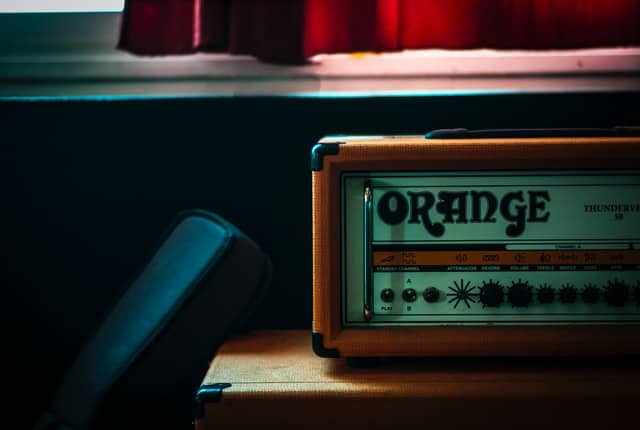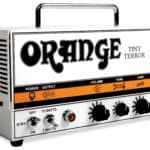Shipping an amp can be a daunting task. They’re heavy, they’re bulky, and they’re often jam-packed with components that can break without proper handling. So it’s always wise to take precautions when you pack up your amp for the journey ahead.
But is it really necessary to remove the tubes for shipping?
In most cases, it’s a good idea to remove at least the power tubes before shipping an amp. The older the amp, and the more it’s been used, the better it is to remove the tubes. However, you should discuss this with the recipient beforehand as not everyone will know how to reinstall them.
I took a look around the internet to see what manufacturers, dealers, and other gearheads had to say, and I found some interesting opinions.
Are tubes the most fragile part of a tube amp?
Well, they are made of glass. That doesn’t necessarily mean they’re delicate, though. Before the invention of the transformer in the late 1940s, tubes were used in all electronics. That includes fighter planes, industrial machines, and other rugged applications.
It’s worth remembering that amp manufacturers understand and expect users to move their gear from gig to gig, and they design quite a bit of durability into their products. Many models have removable protective casings around the tubes.
A lot comes down to the condition of the amp itself:
- A brand new amp will probably have survived some sort of quality control measures before it left the factory. Everything about the product most likely conforms to design specifications. Some manufacturers confidently ship their amps with the tubes installed.
- A well-maintained used amp – even a vintage model – might still come pretty close to those design specs, but time does take its toll. Fittings can loosen, or mounting brackets for other components might get brittle.
- A heavily used amp may not have the protective tube covers still in place. Tube sockets might loosen more easily after tubes have been replaced several times.
Is it recommended to remove the tubes to ship an amp?
There’s a split of opinions about this issue. Many commenters say that removing at least the power tubes is the best way to prevent breakage in transit. In their view, removing the tubes is a way to go the extra mile.
But others point out that accidents can and do happen when removing and reinstalling tubes. And, in some cases, the amp’s new owner might lack the skills to replace the tubes or simply may not want to deal with it. Some recommend asking the recipient ahead of time if they have a preference.
What’s the best way to ship amp tubes separately and safely?
The safest way of shipping a tube amp can be broken down into the following steps:
- Start by making a diagram of the chassis. Number the tube sockets. Work from the owner’s manual or just eyeball it. If you have room, put a small piece of masking tape with the socket’s number on it next to each socket.
- Remove the tubes carefully. Hold them gently but firmly, as close to the base as you can, and give them a gentle circular wiggle as necessary to loosen them.
- Wrap each tube in bubble wrap (with large bubbles, not small ones). Put a piece of masking tape on the outer surface of each wrapped tube and write the number of the tube’s corresponding slot as shown on your diagram.
- Put the wrapped tubes in a small box and put the box in the larger box alongside the amp. Or you can put the wrapped tubes in the amp cavity in the back if there is one.
What could happen if you leave the tubes in?
The tubes could get broken, leaving jagged shards sticking out of the sockets, littering broken glass all over the inside of the amp, and ruining the anxious recipient’s day.
If the package gets dropped or bumped too hard a tube might get knocked loose and shatter. Or another component like a power transformer or speaker bracket could come loose and crash into all the tubes.
What are other tips for shipping a tube amp?
The safest way to go, according to many who claim to have experience, is to take the amp to a UPS or FedEx shipping center, pay them to package it for you, and buy insurance for the amp’s replacement value.
Those folks explain that, if you package the amp yourself and buy insurance from the carrier, the carrier will blame you for inadequate packaging and deny any claim for damage to the amp.
This also happens to be the most expensive way to ship the amp.
Best practices for packaging the amp yourself include:
- Coiling up the power cord and bubble wrapping the coiled cord and plug to prevent it from flailing around and damaging the amp;
- Packing the amp cavity with large-bubble bubble wrap;
- Wrapping the amp in Saran wrap to protect its surface;
- Putting the amp in a double-cardboard or heavy cardboard box that’s the right size to enclose the amp along with a few layers of large-bubble bubble wrapping on all sides of the amp;
- Putting corner braces on all eight corners of the amp – you can buy these or make them yourself with a couple of layers of cardboard;
- Packing the box with enough large-bubble bubble wrap to prevent anything in the box from moving but not so much that the box bulges when you close it; and
- Taping all flaps and seams of the box securely closed with generous amounts of tape, especially on the bottom.
Taking these precautions will minimize the hazard to your tubes even if you choose to leave them in place!
Is it common for amps to be damaged on shipment?
It’s hard to say. There are horror stories on every gear forum I surveyed, and bad things undoubtedly happen sometimes to good amps. But it’s not easy to put a probability on it.
What should you do if your amp is damaged in transit?
- Take pictures of any visible damage. If the box is damaged take pictures of that too.
- Contact the carrier. If the amp was insured for the journey, file a claim for the damage.
- Don’t attempt repairs yourself! Even an unplugged amp can deliver a nasty electrical shock. Take it to a professional amp tech.
Just how fragile are tube amps in general?
Tube amps are more durable than you might think. For more, see

Hello there, my name is Ramiro and I’ve been playing guitar for almost 20 years. I’m obsessed with everything gear-related and I thought it might be worth sharing it. From guitars, pedals, amps, and synths to studio gear and production tips, I hope you find what I post here useful, and I’ll try my best to keep it entertaining also.





